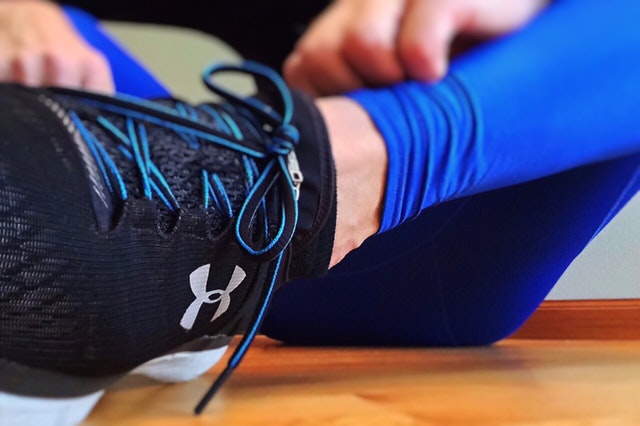For many people, varicose veins are simply a cosmetic issue. The appearance of the blue and purple ropey, twisted veins on the lower body can be embarrassing and prevent you from dressing the way you want. Unfortunately, for others, varicose veins can also lead to much bigger problems and some pretty serious complications. If you have experienced any of the following, you need to see a doctor about your varicose veins immediately. Even if you haven’t experienced these issues, it’s important to get your veins checked to out to ensure these complications aren’t waiting around the corner.
1. Pain
Some pain with varicose veins is normal, especially if you sit or stand all day while working. By the time you go to bed at night, you may feel some fatigue in the legs, as well as heaviness and achiness. Elevating your feet above your heart for about 30 minutes every evening typically relieves this pain, and by the time you wake up the next morning, it should be gone completely. However, if you find that you are still in pain when you get out of bed the next day, you need to meet with your doctor. In many cases, your health insurance provider will cover procedures to reduce and remove varicose veins if pain is an issue.
2. Swelling
Swelling of the legs is also common for those with varicose veins, especially people who are on their feet for most of the day or those who eat a diet high in sodium. Like with pain, elevation can help reduce that swelling. Typically, you will wake up and find that the swelling is gone the next morning. However, if the swelling does not go down after 24 hours, see a doctor to make sure you are not suffering from a more serious health complication.
3. Bleeding
If your varicose veins ever bleed, it’s time to see a doctor. Bleeding can occur due to injury in the area of the vein, or it can occur when the skin over the vein becomes too thin. Unfortunately, you may lose a lot of blood when this happens. Elevate the leg that is bleeding, and apply pressure to the wound to make the bleeding stop. If that doesn’t work, you may need emergency medical attention.
4. Stasis Dermatitis
If you experience swelling in the legs and ankles, as well as varicose veins, it could lead to stasis dermatitis. This type of chronic inflammation creates a dry, itchy patch of skin on your legs below the knees that may even be discolored and swollen. Not treating it can lead to infection.
5. Skin Ulcers
Untreated varicose veins can also lead to skin ulcers overtime. They typically appear near the ankle on the sides of the legs and can start as a minor scratch or bug bite. Over time, they turn into gaping wounds that may require antibiotics, surgery, or skin grafting. If you have varicose veins and have any kind of injury to your leg, be sure to treat it effectively so that it can heal as quickly as possible.
6. Blood clots.
In some severe cases, you can also develop blood clots in your veins, which is called Deep Vein Thrombosis. It is particularly common with people who fly often. Pain, swelling, redness, heaviness, and warmth in the area, usually just below the back of your knee, are all signs of DVT. If not treated part of the blood clot can break off and get into your lungs.
- mail: info@incredibleveins.com
- phone: (818) 900 -2700
Complications of Varicose Veins
Complications of Varicose Veins
Share:
Facebook
Twitter
Pinterest
LinkedIn

Most Popular

Try These Vein-Friendly Pool Workouts
16 octubre, 2017


How are Varicose Veins Diagnosed and Treated
2 octubre, 2017
Incredible Veins
Related Posts
The Latest Technology in Tattoo Removal
The art of tattoos has been around for centuries. The archeological record shows the oldest discovery

Try These Vein-Friendly Pool Workouts
Summer is over, but that doesn’t mean you have to say goodbye to your pool workouts.

Tips for Avoiding Varicose Veins for Teachers and Other Professionals
People who find themselves standing or siting for long periods of time at work may be

How are Varicose Veins Diagnosed and Treated
Reactions to developing varicose veins can vary from person to person. For some, it’s a matter
